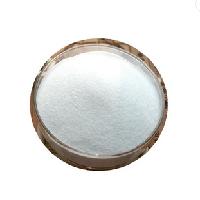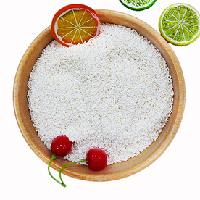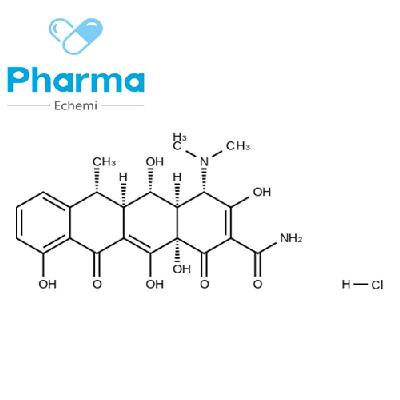-
Categories
-
Pharmaceutical Intermediates
-
Active Pharmaceutical Ingredients
-
Food Additives
- Industrial Coatings
- Agrochemicals
- Dyes and Pigments
- Surfactant
- Flavors and Fragrances
- Chemical Reagents
- Catalyst and Auxiliary
- Natural Products
- Inorganic Chemistry
-
Organic Chemistry
-
Biochemical Engineering
- Analytical Chemistry
-
Cosmetic Ingredient
- Water Treatment Chemical
-
Pharmaceutical Intermediates
Promotion
ECHEMI Mall
Wholesale
Weekly Price
Exhibition
News
-
Trade Service
In February 2020, the WHO estimated in a cancer report that one in six deaths worldwide is caused by cancer
.
There are 9.
96 million cancer deaths in the world, 3 million in China, accounting for 30% of the total deaths
However, in June 2021, Akilence injection (trade name: Yikaida) was approved in China, which once brought hope to the majority of cancer patients
.
For a time, it was rumored on the Internet that a single injection of 1.
2 million could make cancer cells disappear
01
01Origin of CAR-T
Origin of CAR-TThe figure below shows the mechanism by which T cells recognize cancer cells
.
It mainly recognizes cancer cells through receptors on its own surface, that is, TCR
.
Figure 1.
Left: Killer T cells recognize cancer cells through TCR and play their role, right: The role of killer T cells in tumor immune response
In 1989, in the process of studying T cell receptors (TCRs), Israeli scientist Zelig Eshhar and his team found that B cells produced antibodies and TCRs that were structurally similar, with constant and variable regions
.
Antibodies can specifically recognize antigens, but TCRs can only recognize antigen fragments presented by MHC
.
Figure 2.
The first-generation CAR consists of the variable region of the BCR and the constant region of the TCR
Then, in order to put this technology into disease treatment, Eshhar cooperated with the Rosenberg laboratory to successfully construct chimeric antigen receptors for 3 different cancer targets using the single-chain antibody fragment scFv derived from antibodies.
The first-generation CAR-T is composed of This birth
.
02
02drug mechanism
drug mechanismChimeric Antigen Receptor (CAR) is mainly composed of three functional domains, namely extracellular domain, transmembrane domain and intracellular domain
.
The extracellular domain is composed of a single-chain variable fragment (scFv) of a monoclonal antibody responsible for recognizing and binding antigens and a hinge region (Hinge) that acts as a linker
.
Figure 3.
Chimeric Antigen Receptor Structure
1
1extracellular domain
extracellular domain(1) Antigen recognition domain
Structural composition: The main structure is scFv, which is formed by connecting the light chain (VL) and heavy chain (VH) of monoclonal antibodies through polypeptides
.
Function: scFv confers the ability of T cells to specifically recognize and bind target antigens
.
The recognition and binding of CAR-T cells to target antigens through scFv is independent of MHC antigen presentation
.
(2) Hinge region (Hinge)
Structural composition: The hinge region connects the scFv and the transmembrane domain.
The hinge region of most CARs is derived from the hinge of IgG or the extracellular region of CD8α/CD28
.
Function: Multiple studies have shown that CAR-T cell activation is related to hinge region length
.
Adjusting the length of the hinge region can make the CAR-T cell and the target cell at the optimal distance, so that the scFv can overcome the steric hindrance and bind the antigen efficiently
.
2
2transmembrane domain
transmembrane domainStructural composition: The commonly used transmembrane domains are derived from CD4, CD8α, CD28 and CD3ζ
.
Function: The transmembrane domain connects the extracellular domain of the CAR with the intracellular signaling domain and anchors the receptor to the T cell membrane
.
3
3intracellular domain
intracellular domain(1) costimulatory domain
Structural composition: usually from the CD28 receptor family (CD28, ICOS) or the tumor necrosis factor receptor family (4-1BB, OX40, CD27)
.
Function: It can realize the dual activation of co-stimulatory molecules and intracellular signals, so that T cells can continue to proliferate and release cytokines, and improve the anti-tumor ability of T cells
.
(2) Signal transduction domain
Structural composition: usually T-cell receptor TCR/CD3ζ chain or immunoglobulin Fc receptor FcεRIγ chain
.
Function: Contains immunoreceptor tyrosine activation motifs (ITAMs), which play a role in T cell signal transduction
.
Once the scFv moiety recognizes and binds the antigen, the costimulatory domain and CD3ζ chain signal
.
The CD3ζ chain contains three immunoreceptor tyrosine-activating motifs (ITAMs) that, upon phosphorylation (P), signal through a zeta-associated protein (ZAP70)
.
Figure 4.
Diagram of signal transduction
The specific steps for the application of CAR-T therapy in the clinic are shown in the following figure:
Figure 5.
Specific steps in CAR-T clinical practice
The standard CAR-T treatment process is mainly divided into the following seven steps:
1.
Assess whether the patient is eligible for CAR-T therapy
.
2.
Separation of T cells: Mononuclear cells are separated from the blood of tumor patients by a peripheral blood cell separator, and the T cells are further purified by magnetic beads
.
3.
Transforming T cells: Using genetic engineering technology, a viral vector containing a chimeric antigen receptor that can recognize tumor cells and activate T cells is transferred into T cells, that is, T cells are transformed into CAR-T cells
.
4.
Expansion of CAR-T cells: In vitro culture to massively expand CAR-T cells
.
Generally, a patient needs tens of millions or even hundreds of millions of CAR-T cells.
The larger the body weight, the more cells are needed
.
5.
Infusion of CAR-T cells back into the human body: The expanded CAR-T cells are injected back into the patient through an intravenous route to start tumor cell immunotherapy
.
6.
Monitor the reaction: closely monitor the patient's body reaction, especially severe adverse reactions may occur within one to two weeks after the cells are infused into the body
.
7.
Evaluate the therapeutic effect: The therapeutic effect on the primary disease is usually evaluated on the 15th and 30th days after the infusion of CAR-T cells
.
With the continuous development of the times and technology, CAR is also constantly updated and iterated
.
At present, researchers have developed five generations of CAR-T
.
Figure 6.
Comparison of five generations of CAR-T
03
03Application of CAR-T
Application of CAR-TScope of application: Kymriah is mainly suitable for children and young adult patients with relapsed/refractory acute lymphoblastic leukemia
.
and adult patients with relapsed or refractory diffuse large B-cell lymphoma
.
In addition, it has also achieved positive results in the treatment of relapsed or refractory follicular lymphoma
.
Applicable conditions: The use of CAR-T therapy requires that the patient's tumor markers or immunohistochemical detection of one or several tumor-related antigens are positive, and the tumor tissue is positive for HLA-I antigens
.
After stopping chemotherapy or radiotherapy, peripheral blood cells return to normal or near-normal values (except for those achieved with leukocyte-raising drugs)
.
It is also required that the patient has no severe anemia, systemic organ failure and cachexia; normal liver and kidney function, normal vital signs; no severe allergic constitution
.
Technical advantages:
Multi-targeting and precise strike: It can use both tumor protein antigens and glycolipid non-protein antigens, expanding the scope of tumor antigen targets, and its action process is not restricted by MHC
.
Therefore, CAR-T cells can overcome the immune escape of tumor cells by downregulating the expression of MHC molecules and reducing antigen presentation;
Wide range: Once the CAR gene construction for a certain tumor antigen is completed, it can be widely used;
Long-lasting effect: The new generation of CAR-T structure has added gene sequences that promote the proliferation and activation of T cells, which can ensure that T cells can proliferate after entering the body.
CAR-T cells have immune memory function and can survive in the body for a long time
.
Adverse reactions: mainly cytokine release syndrome
.
In addition to hypogammaglobulinemia, bleeding episodes, tachycardia, diarrhea, vomiting and delirium
.
Patients with cytokine release syndrome often experience varying degrees of flu-like symptoms, including high fever, nausea, and muscle pain
.
Different degrees of cytokine release syndrome have different remission treatment methods.
In more severe cases, tocilizumab can generally be used to obtain better remission treatment
.
04
04summary
summaryThe "1.
2 million needles" CAR-T drugs have a good performance in the treatment of cancer.
People's attention is not only because of its "astronomical price", but also because such drugs have brought dawn for mankind to defeat cancer.
It remains to be seen whether drugs with stronger efficacy and lower cost can be developed in the future
.
references:
[1] Batlevi Connie Lee, Matsuki Eri, Brentjens Renier J, Younes Anas.
Novel immunotherapies in lymphoid malignancies.
[J].
Nature reviews.
Clinical oncology, 2016, 13(1).
[2] Teresa R.
Abreu, Nuno A.
Fonseca, Nélio Gonçalves, João Nuno Moreira,Current challenges and emerging opportunities of CAR-T cell therapies,Journal of Controlled Release,Volume 319,2020,Pages 246-261.
[3] Larson RC, Maus MV.
Recent advances and discoveries in the mechanisms and functions of CAR T cells.
Nat Rev Cancer.
2021 Mar;21(3):145-161.
[4] Teresa R.
Abreu, Nuno A.
Fonseca, Nélio Gonçalves, João Nuno Moreira,Current challenges and emerging opportunities of CAR-T cell therapies,Journal of Controlled Release,Volume 319,2020,Pages 246-261.







